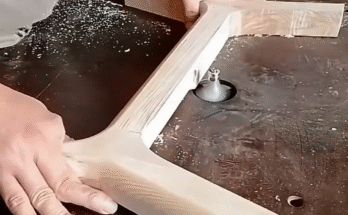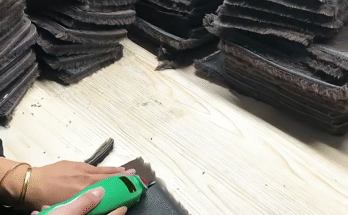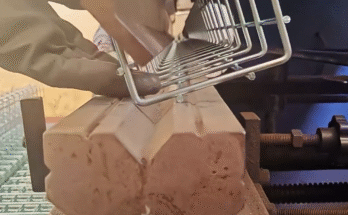Water jet printing, often associated with cutting and cleaning, also finds applications in specialized printing techniques where precision and non-contact application are key. While less common than inkjet or laser printing for everyday use, understanding its principles can be quite insightful.
Here’s a step-by-step overview of how the water jet printing process typically works:
Step 1: Water Source and Filtration – The Foundation of Purity
The process begins with a clean, deionized water supply.
- Water Reservoir: A tank holds the water, which is often recycled in a closed-loop system to conserve resources.
- Multi-Stage Filtration: The water undergoes rigorous filtration to remove impurities, particles, and minerals. This is crucial to prevent nozzle clogging and ensure a consistent, high-quality jet. Deionization further purifies the water, removing ions that could interfere with certain applications.
Step 2: High-Pressure Pump – Generating the Force
This is the heart of the water jet system, creating the immense pressure needed for printing.
- Intensifier Pump (Common): Most industrial water jet systems use an intensifier pump. This pump uses hydraulic pressure to drive a piston, which in turn pressurizes the water to extremely high levels, often ranging from 30,000 to 90,000 PSI (pounds per square inch) or even higher.
- Direct Drive Pump (Less Common for Printing): Some systems use direct-drive pumps, which directly pressurize the water using a crankshaft and plungers. While simpler, they typically achieve lower pressures than intensifier pumps.
Step 3: High-Pressure Tubing and Accumulator – Delivering the Power
The pressurized water needs to be safely and efficiently delivered to the printing head.
- High-Pressure Tubing: Specialized, thick-walled stainless steel tubing is used to withstand the extreme pressures. These tubes are designed to prevent leaks and bursts.
- Accumulator: An accumulator (often a cylinder with a piston or bladder) is used to smooth out pressure fluctuations from the pump, ensuring a steady and consistent water flow to the nozzle. This is vital for uniform printing.
Step 4: Printing Head and Nozzle Assembly – The Precision Tool
This is where the high-pressure water is precisely directed to form the “print.”
- Orifice (Nozzle): The core of the printing head is a tiny orifice, typically made from hard materials like sapphire or diamond. The size of this orifice dictates the diameter of the water jet and thus the resolution of the “print.”
- Focusing Tube (Optional): For some applications, a focusing tube might be used to further narrow and stabilize the water jet, especially for very fine details.
- Mixing Chamber (for Abrasive Jet Printing): While primarily for cutting, in some specialized “printing” applications involving material removal or etching, an abrasive (like garnet) might be introduced into a mixing chamber just before the nozzle to create an abrasive water jet. This is less common for pure “printing” but relevant for surface modification.
Step 5: Motion Control System – Directing the Print
To create patterns or images, the printing head must move with extreme accuracy.
- CNC (Computer Numerical Control) System: A sophisticated CNC system controls the movement of the printing head in multiple axes (X, Y, and sometimes Z).
- Software Integration: CAD/CAM software is used to design the patterns or images, which are then translated into precise motion commands for the CNC system. This allows for complex and intricate designs.
- Robotic Arms (for 3D or Complex Geometries): For printing on non-flat or complex 3D surfaces, robotic arms equipped with water jet printing heads can be employed, offering greater flexibility and reach.
Step 6: Material Handling and Substrate – The Canvas
The material or substrate on which the water jet “prints” is positioned precisely.
- Workholding: The material is securely clamped or positioned on a worktable to prevent movement during the printing process.
- Substrate Compatibility: The water jet printing process is often used for materials where traditional inks might not adhere, or where a non-contact, solvent-free application is desired (e.g., for delicate surfaces, or for marking/etching where material removal is the “print”).
Step 7: The Printing Process – The Act of Application
With everything in place, the water jet is activated.
- Jet Activation: The high-pressure water is released through the nozzle, forming a coherent, high-velocity stream.
- Material Interaction: Depending on the application, this jet can:
- Mark/Etch: Remove a tiny amount of material from the surface to create a permanent mark.
- Clean: Precisely clean a specific area without damaging the surrounding material.
- Apply Fine Droplets: In some niche applications, the controlled release can be used to apply very fine droplets of liquid for specialized coating or deposition, though this is less common than traditional inkjet for such tasks.
- Controlled Movement: The CNC system guides the printing head along the programmed path, creating the desired pattern or image.
Step 8: Waste Management and Collection – A Clean Process
- Catch Tank/Grate: The water (and any removed material) is collected in a catch tank or falls through a grate into a reservoir below the worktable.
- Recycling and Filtration: The collected water is typically filtered and recycled back into the system, minimizing water waste.
Step 9: Post-Processing and Quality Control – The Final Check
- Drying: The printed material may need to be dried, depending on the application.
- Inspection: The “printed” or marked material is inspected for accuracy, consistency, and adherence to specifications.
Water jet printing, while not a conventional “ink-on-paper” method, offers unique advantages in industrial and specialized contexts where precision, material removal, or non-contact application are paramount. Its ability to create intricate patterns and marks on a variety of materials makes it a valuable tool in advanced manufacturing and processing.



